The Bukas Lab is a physical space and platform for pluridisciplinary and intersectoral initiatives in art, design, technology, and futures literacy. Bukas is operated by the UP Open University and was originally established in collaboration with the Space Ecologies and Design (SEADS) and Curiosity.
Don't wanna be here? Send us removal request.
Text
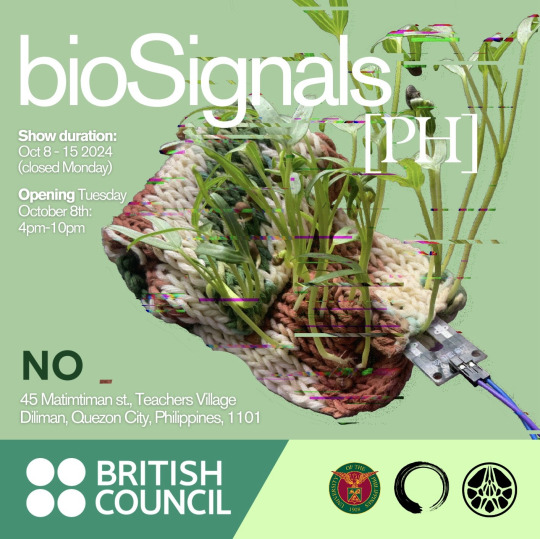
About bioSignals [PH]
bioSignals is an artistic and cultural exchange that bridges three island nations – New Zealand, the Philippines, and the UK – through the real-time collection, processing, and transmission of signals generated from local plant life. By transforming these electro-botanical signals into multisensory installations, the project explores interspecies communication and reimagines our relationship with nature, emphasizing our global interconnectedness not just as human society, but as part of a broader living ecosystem. bioSignals foreground that we–human and non-human actors–are all part of one interconnected and interdependent world.
Through these three distinct yet interconnected approaches, bioSignals creates a global dialogue about resilience in the face of environmental challenges. The New Zealand team's 'resilience garden' merges memories, meditation, and rituals, connecting plants beyond the realms of technology. Meanwhile, the UK team explores botanical horror as a way of examining the uncanny and creating a space to contemplate the consequences of our actions on the environment. Similarly, our team in the Philippines focused on resilience through the specific lens of the tropics and the socio-political-economic conditions of the Global South. In the Philippines, where climate change impacts are often felt most severely and where resources for mitigation may be limited, resilience becomes the reality. Our decision to explore resilience was driven by the urgent need to understand and enhance the adaptive capacities of both human and ecological systems in vulnerable tropical regions.
As resilience became not a choice but a necessity in the Philippines, Kangkong (Ipomoea aquatica) emerged as the protagonist in the bioSignals PH team’s evolving narrative of survival. The bioSignals Philippines team exhibition focuses on kangkong, which, despite its ease of cultivation and medicinal properties, is frequently dismissed as merely a commonplace vegetable in the Philippines. This choice is deeply rooted in the sociocultural significance and scientific relevance of kangkong in the Philippines. At the heart of our exhibition lies kangkong, both a metaphor and a medium, a testament to resilience and adaptability in Filipino culture, thriving in the margins.
Through an interdisciplinary approach, our exhibition tells the story of kangkong through collected plant signals, environmental adaptation, and cultural connotations, while highlighting its—and by extension, our—resilience. This exhibition harnesses the silent language of plants, transforming biological processes into a dialogue that transcends geographical boundaries.
The use of mixed media in the artwork reflects different perspectives on resilience. Kangkong's adaptability to grow anywhere symbolizes resilience as flexibility, demonstrated by Gino Javier's cultivation in recycled containers; and Jerome Suplemento, Diego Maranan, and Pat Calora's use of woven yarn where the roots findtheir way around the fibers. Resilience as survival is explored through Shari San Pablo’s work, where the kangkong fields metaphorically represent both resilience and its limits. The ongoing process of growing kangkong, monitored through signals, exemplifies resilience as a process–a dynamic and ever-evolving concept.
The exhibition space now becomes a living laboratory where art, science, and culture converge. bioSignals would like to remind us that resilience is not a static state but a dynamic process of constant renewal—a flow that, like kangkong, finds ways to persist and thrive. As we face global challenges of climate change and biodiversity loss, this exhibition invites us to observe, connect, and learn from the quiet wisdom of kangkong which has mastered the art of survival.
Dr Diego Maranan, Jerome Suplemento, Dr Shari Eunice San Pablo, Blancaflor Arada, Pieter Steyaert, Gino Javier / TERRA BOMBA, Pat Calora
Description of bioSignals[PH] Works



Resilience Requires Renewal
Diego Maranan
In this work, I attempt to embody the concept of resilience through the growth of plants on a suspended fabric, an environment that is both unnatural and precarious for them. Resilience, especially in nature, is often perceived as an innate quality—something inherent in plants, animals, and ecosystems. We admire plants for their ability to grow in seemingly inhospitable environments, to persist despite challenges. But resilience is not simply a matter of toughness or endurance. It is something that must be nurtured, supported, and renewed.
Like the other works by the bioSignals PH team, I use kangkong (Ipomoea aquatica), a plant known for its adaptability and tenacity, as the central figure in this experiment. Kangkong is typically grown in wet, muddy environments, and yet, in this piece, kangkong seeds are embedded in suspended crocheted fabric—something they wouldn’t naturally attach to. This unusual medium challenges the plants, asking them to adapt in new ways.
At first glance, the plants appear resilient simply because they are growing in an unconventional space. However, their resilience is only possible because of the support systems I've put in place. One key element in this work is the running water that continuously cycles over the suspended fabric. The water is not just a passive medium but an active participant in the resilience of the plants. By cycling over the fabric, the water prevents stagnation, keeps the plants nourished, and sustains a moisture gradient that runs from the top of the fabric (dry) to the bottom (very wet). This environmental gradient offers the plants a variety of moisture levels to choose from. In turn, this creates a dynamic and adaptive growing environment, where each plant can determine the best location to extend its roots. The water flow itself also symbolizes renewal—always moving, always fresh, and essential for the continued growth of the plants.
In addition to the water, I have employed grow lights to provide the plants with the necessary light for photosynthesis. Here, the resilience of the plants is dependent on an external source of energy—without the grow lights, the plants would not survive. This illustrates another aspect of resilience that often goes unrecognized: the need for nurturing from the environment. Resilient as they are, plants still require the right balance of light, water, and nutrients in order to thrive.
Another layer of support in this piece comes from the chia seeds that surround each kangkong seed. The chia seeds, when exposed to water, form a gelatinous substance that acts as a natural adhesive, helping the kangkong seeds adhere to the fabric. This “glue” holds the seeds in place, allowing them to establish roots in an environment where they would otherwise struggle to stay put. The chia’s gelatinous coating also helps retain moisture, creating a small, localized moisture reservoir for the kangkong. In this way, the chia seeds act as an invisible support system, assisting the kangkong in its survival and growth. I believe that the chia seeds may possibly also contribute in another way: by forming a root network that the kangkong can eventually entangle itself with. As the chia sprouts and sends out roots, they may create a secondary substrate for the kangkong’s roots to attach to, providing more anchorage and stability than the fabric alone could offer. This potential interaction between the chia and kangkong further reinforces the idea that resilience is not a solitary act—it’s a process that involves mutual support, collaboration, and symbiosis.
Even though plants can grow in surprising and unlikely places, their survival and growth are not purely a testament to their own strength. They rely on a network of nurturing factors—the water, the light, the fabric, and even the chia seeds. This mirrors human resilience; humans, too, are often celebrated for our ability to withstand hardship or adapt to change, especially when living in the harsh or resource-restricted contexts of the Global South. But rarely is our resilience solely a matter of individual strength. Like the plants in this piece, we are supported by external systems: our communities, our environments, and the structures around us.
𖥸

bioSignals PH x NZ x UK
These two looping videos provide a glimpse into the process and activities of the three bioSignals teams from across the world. The first (top) is a slideshow of images shared by the Philippine, New Zealand, and UK teams. The second is a walkthrough of a virtual world built in the Sansar platform created by Daniël Vandersmissen, in which text, images, and video from the three teams are embedded throughout the environment.
𖥸

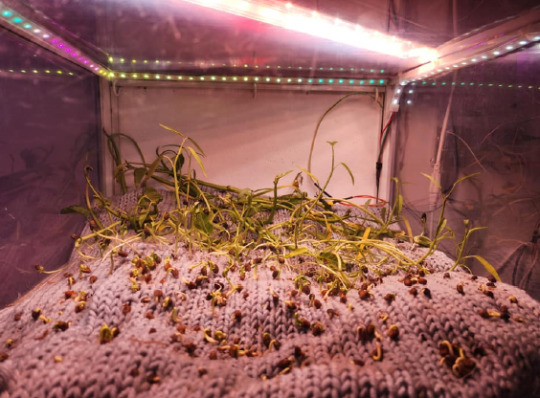

Landscape 1
Jerome Suplemento

Landscape 2
Jerome Suplemento
My decision to use an alternative growing platform for the plants is to feature their adaptability, at the same time the knitted yarn represents a malleable landscape. It also calls to attention the plight of local farmers having no ownership of the land that they till. Encased in a terrarium, the piece creates its microclimate similar to our local weather, and sensors are used to track the water cycle reflecting the sudden shifts in our climate and environment—literally and figuratively, The arrangement of the plants including the moldy seeds illustrates the natural process of growth and decay, emphasizing the delicate balance between life and death in the ecosystem. Through this work, the artist explores the dynamic relationship between nature and its surroundings, highlighting the resilience and vulnerability inherent in both.
𖥸



Diligin Ng Suka Ang Uhaw na Lumpia (1987)
Gino Javier
In this installation, I confront the pressing issues of food security through the lens of urban agriculture and waste repurposing. My work transforms an array of discarded food packaging into vessels of growth and possibility. Coffee cups, milk cartons, foil packaging for chips and pancit canton, plastic containers of mayonnaise, tin cans, and plastic containers—everyday vessels of consumption—are reimagined as cradles of cultivation. By growing kangkong (water spinach) using various propagation methods within these repurposed containers, I challenged our perceptions of waste and sustenance.
The title, "Diligin Ng Suka Ang Uhaw na Lumpia", evokes a sense of irony and futility, mirroring the contradictions inherent in our current food systems. The piece employs multiple cultivation techniques—water propagation, soil cuttings, seed germination, and hydroponics—each method representing different approaches to food production and sustainability.
The grow lights cast an artificial glow over the plants, highlighting our increasingly technological relationship with food production. This juxtaposition of natural growth within synthetic containers, illuminated by artificial light, speaks to the complex interconnections between nature, consumption, and survival in urban environments.
My piece serves as both a practical demonstration of urban farming possibilities and a critical commentary on the precarity of our food systems. By reimagining waste as a resource and exploring various growth methods, the installation suggests pathways toward more sustainable and resilient food practices, while questioning the systems that necessitate such adaptations.
𖥸


Cycle of Decay
Shari San Pablo
In "Cycle of Decay," I explore the complex relationship between nature's resilience and human violence through the symbolism of kangkong (water spinach). This installation features plaster body parts - a torso and hands - sitting on top of soil and kangkong to illustrate decomposition, illuminated by a stark red light.
The piece draws from the Filipino phrase "mabulok sa kangkungan" (to rot in water spinach fields), which typically denotes abandonment or defeat. Upon looking into the etymology of the phrase, I found that during Martial Law in the Philippines, people hid the bodies of victims from killings by authorities in water spinach fields because of its thick layers.
My work echoes the cruel irony of how humans exploit the very resilience of nature. Kangkong, known for its ability to clean toxins from water and grow in the harshest conditions, has paradoxically become associated with concealing the evidence of violence. Bodies of victims from extrajudicial killings have been found in kangkungan.
Through this installation, I want to illustrate how resilience, often celebrated particularly in Filipino culture, has its limits when it's merely a form of survival. The kangkong continues to grow and purify, yet it's perpetually burdened with processing our decay and violence. This cycle represents an exhausting loop of trauma - the plant cleanses, humans corrupt, and the cycle begins anew. The stark white plaster body parts being reclaimed by the kangkong visualize this tension between purification and contamination.
This piece embodies, both literally and metaphorically, the Filipino phrase "mabulok sa kangkungan" - to rot in the water spinach fields, forgotten. Here, we allow the kangkong to wither naturally, mirroring the slow decay the saying evokes.
My use of red lighting is intentional. Beyond its reference to Martial Law, it bathes the installation in a warning glow, serving as both a memorial to past victims and an alarm about ongoing and potential future repression. It ensures we cannot look away or forget, challenging the viewer to confront the reality of how human actions can pervert even the most restorative natural processes.
The title "Cycle of Decay" speaks to multiple layers of decomposition - the literal decay of hidden bodies, the moral decay of using nature to conceal violence, and the continuous cycle of purification and contamination. Yet it also questions the nature of resilience itself. Is the ability to withstand trauma really something to celebrate? At what point does resilience become a euphemism for being repeatedly victimized?
In creating this piece, I formed an intimate relationship with kangkong, observing its growth and resilience firsthand. This process deepened my understanding of the plant's symbolic significance in Filipino culture - how it represents our people's ability to survive and thrive in difficult conditions. Yet, like the kangkong, this resilience often comes at a cost. We adapt and survive, but the systems that necessitate this resilience remain unquestioned and unchanged.
Through "Cycle of Decay," I invite viewers to reflect on these interconnected themes of resilience, violence, and survival. The installation serves not just as an artwork, but as a form of protest and memorial. It reminds us that while nature may be resilient, continuously capable of renewal and purification, we must question the cost of this resilience and our role in perpetuating cycles of violence and decay. As kangkong continues to clean our waters and bear witness to our crimes, we must confront the limits of resilience as survival and strive for a world where such resilience is no longer necessary.
𖥸

Life Between the Gaps
Patricia Calora
In “Life Between the Gaps”, I explore the idea of resilience through an intentionally imperfect, anatomically-inspired crocheted heart, made from both acrylic and cotton yarn, with several kangkong plants (Ipomoea aquatica) growing through it. The heart’s form is deliberately flawed, with gaps and openings created during the crochet process through stitch increases, decreases, skips, yarn changes, and unwoven yarn ends. These imperfections symbolize the idea that growth and survival often arise in spaces of vulnerability, where life can flourish even under non-ideal conditions. The plants, at different stages of growth—some fully grown, some still seeds—represent resilience as an ongoing process of adaptation and renewal.
The heart is filled with earth—soil, coco coir, and moss—grounding it in nature and strengthening its connection to the plants. A closed watering system ensures their survival: when soil moisture drops to 25%, water is pumped from a basin at the base of the piece, flowing through the heart’s aorta. This inversion of the aorta’s traditional function—where it typically carries blood away from the heart—symbolizes the heart’s need for external nurturing, challenging the notion that resilience is purely internal.
By combining natural and synthetic materials, this piece aims to reflect the complex environments in which life exists, where adaptation is key. This piece explores resilience not as a self-sustained trait but as a cyclical process that requires external care and renewal. Just as the heart, though vital, needs nourishment to function, life thrives when nurtured, even in fragile or imperfect spaces.
𖥸
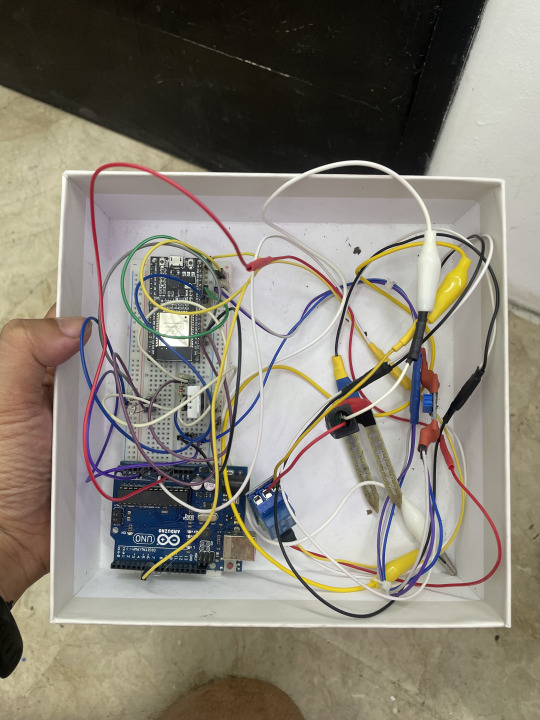


ESP-WROOM-32 ecosystem
Blancaflor Arada
At the beginning of the project, the initial setup utilized an Arduino UNO R2, a popular, low-cost open-source microcontroller board, connected to a Digital Humidity and Temperature sensor (DHT22), a photoresistor (light sensor), and a soil moisture sensor. However, since bioSignalsUK and NZ are using the cloud-based platform Adafruit IO, the system had to be migrated to another microcontroller, the ESP-WROOM-32. This microcontroller has similar capabilities to Arduino but includes the added advantage of Wi-Fi connectivity, making it compatible with cloud-based platforms such as Adafruit IO.
One of the challenges I faced was to familiarize herself with the functionalities of the ESP-WROOM-32 and Adafruit IO. My task was to create a dashboard to display sensor data such as humidity, temperature, light levels, and soil moisture, and to transmit this data from the ESP-WROOM-32 to the Adafruit IO platform, where it could be visualized through shared feeds.
Additionally, I needed to understand how to integrate a submersible motor pump, relays, a battery pack, and a 12V peristaltic motor pump to build an automated watering system. Furthermore, I explored the integration of a 5V LED strip into the ESP-WROOM-32 ecosystem, including learning how to set up power supply connections. Programming for these components was done using the Arduino Integrated Development Environment (IDE), and various libraries were installed to support the functionality of Adafruit IO.
I also explored the Blues Wireless Starnote Starter Kit, a cost-effective hardware development kit designed to simplify building connected IoT solutions using non-terrestrial networks (NTN) or satellite signals. I successfully sent sample data feeds via the Blues Notecard, which uses NTN, but was unable to utilize satellite signal transmission in the Philippines due to the lack of coverage from the satellite provider Skylo.
I also attempted to integrate the Blues Wireless Starnote Starter Kit with the ESP-WROOM-32 microcontroller, connecting the ESP-WROOM-32’s GPIO 21 and 22 pins to the SDA and SCL pins of the Starnote kit. Although there were no errors in the code, the data sent from the ESP-WROOM-32 did not appear in the Notehub.io platform, likely due to the absence of Skylo coverage in the region. As a result, the Blues Wireless Starnote Starter Kit was not used in the final exhibit setup.
In the bioSignals exhibit, there were various ESP-WROOM-32 setup configurations:
Landscape 1 – The setup included an ESP-WROOM-32, DHT22 sensor, photoresistor, and soil moisture sensor.
Landscape 2 – This setup also included the Arduino UNO R2 and LED strip, which changed color in response to changes in sensor values (humidity, light, or soil moisture).
Life Between the Gaps – In addition to the ESP-WROOM-32 ecosystem, this setup, with the Arduino UNO R2, includes watering system components, such as a relay and a 12V peristaltic motor pump. When the soil moisture level dropped to 25%, the pump activated, watering a crocheted heart for 10 seconds.
Diligin Ng Suka Ang Uhaw na Lumpia – This setup was similar to bioSignals PH: Jerome, featuring an ESP-WROOM-32, DHT22 sensor, photoresistor, and soil moisture sensor.
These variations highlighted different configurations of the ESP-WROOM-32 ecosystem, demonstrating the flexibility and adaptability of the microcontroller in various IoT and artistic applications.


kangkøng
Pieter Steyaert
This system collects real-time data from sensors monitoring plants in the Philippines, New Zealand, and the United Kingdom. Sensors gather various metrics, including temperature, humidity, soil moisture, light levels, and biosignals such as pressure and luminance. Each data stream creates an organic blob, visually representing the unique environmental conditions at each location. As data flows continuously, the blobs morph and evolve, reflecting the dynamic conditions of the plants. The system captures subtle shifts in humidity and temperature, producing an organic visualization that responds to these inputs.
To support this, I developed two tools. The first is designed to capture, analyze, and stream this data, making it accessible for the teammates across the different locations in the world to explore, interpret and implement in their own ways. The second tool is a visual data exploration platform that transforms the raw data into dynamic visuals. This way, the data isn’t just a set of numbers but becomes an explorative experience, inviting us to see how the conditions in each region change over time and how they influence one another.
Credits
Led by a distributed team of creative collaborators from the UPOU Faculty of Information and Communication Studies, TERRA BOMBA (Philippines), AwhiWorld (New Zealand), the United Kingdom, and international artscience collective Space Ecologies Art and Design (SEADS), bioSignals gathers and shares biological signals from live plants, transmitting this data to global partners. The Philippine team’s focus on the culturally significant and resilient kangkong highlights themes of adaptability and connection in both natural and human systems.
bioSignals is a creative research project funded by the British Council’s #ConnectionsThroughCulture programme, with additional support in the Philippines from UPOU and the UP President’s Committee for Culture and the Arts, Arts-British Council, and British Council Philippines.
Organisational project members: AwhiWorld, SEADS, and UP Open University.
PH team: Diego Maranan, Jerome Suplemento, Blancaflor Arada, Shari Eunice San Pablo, Gino Javier, Peter Steyaert
NZ team: Maggie Buxton, Kim Newall, Daniel Vandersmissen, Frederico D.A de Sena Pereira, and Jarred Taylor
UK team: Mary Pedicini, Amy Holt, Ulrike Kuchner, Angelo Vermeulen, and Matthew Woodham
Special thanks to Leo Letran, Edilyn Villacora, Jimmy Fermin, Jennifer Pareja, and Earl Magtibay for logistical support and for caring for the plants.
Photography: Participating Artists, Tessa Martinez, Joy Rebulanan, Zayra Bulawan. Text: Participating Artists
0 notes
Text
2024.05.07 - Group Meeting

This is the point in the discussion when we were discussing using Discord a bit more, but this is also where we begin to ask, "To what extent can we comment on what the other team is doing? To what extent is it OK just to witness?" Fred asks, "Is it OK if we comment on the electronics?" Diego, "There can be a difference between whether one team is in a more diverging thinking kind of mood or whether they are in a more convergent kind of mood." Mary: "I find it easier to comment in the non-country specific place." Common ground, says Fred.

0 notes
Text
2024.05.03 - An update from Blanca
"Greetings from the PH team! I've successfully configured the sharing of temperature and humidity data (for now) from DICT, Diliman, Quezon City using Adafruit.io. Initially, I was quite nervous since it was my first time using Adafruit. However, after diving into Adafruit tutorials, setting up with the ESP WROOM 32 microcontroller, and tackling frustrating errors due to numerous library installations in Arduino IDE and other runtime errors, I've successfully set up the Adafruit.io dashboard! 🥰"

0 notes
Text
2024.05.07 - bioSignalsPH x UPOU-FMDS Permaculture garden

0 notes
Text
Wearable Futures: The technopolitics of our clothes
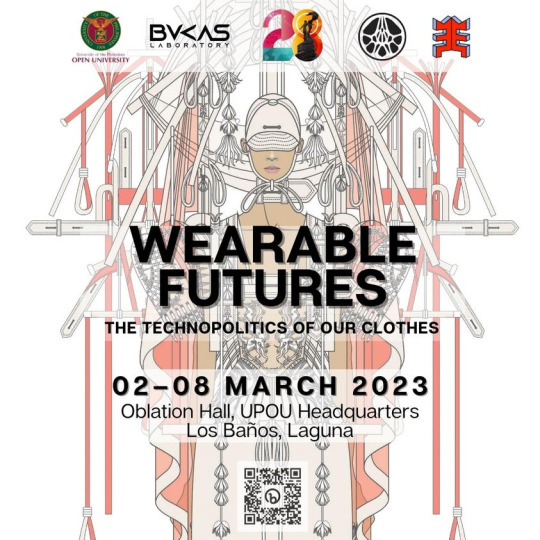
Our future is influenced by how we imagine it might look. Many of our images of the future and the technologies inhabiting it arrive at or are handed down to us, pre-made and in great detail, often by Hollywood but also from other pervasive media platforms such as social media and digital games. Seldom do we get the chance to participate in crafting these images ourselves. And even when we do, seldom are we afforded the opportunity to consider deeply how historical events and contemporary situations shape the trajectory of our journey through what futurists often describe as a cone of possible, potential, and plausible futures. As an exhibit of speculative design propositions, Wearable Futures is a collaborative reimagination of tomorrow as embodied through the future of clothing and wearables.
Our relationship with clothing has always been rich and fraught. In Judeo-Christian narratives, clothing was a form of punishment for knowledge and worldliness. When Adam and Eve ate the fruit from the tree of knowledge, part of the punishment was the loss of innocence and the shame of being naked. In contemporary sociological and anthropological analysis, clothing started as purely functional implements intended to protect us from the environment. At some point, clothing also became a vehicle to convey social status, as well as for “practices of identification”, for self-identity and group membership, yes, but also othering and, therefore, stratification. Clothing extends the self even as it signals something about its wearer. Clothing, in other words, is inherently political, something that is palpably clear when we also consider how the widespread commodified demand for clothes continues to generate market forces that, in turn, often result in exploitative labor and extractive practices.
Clothing is also a form of technology, and one that is particularly related to our everyday experience. Ito and pinakamalapit sa ating katawan at sa ating identity. Wearable Futures invites us to consider how experimenting with clothing has the potential to transform the way we understand ourselves in relation to the environment and to others. Wearable technology design is widely accessible to our context, not only because it requires materials and tools that cost less than those involved in many other forms of engineering innovation, but also because it generates outputs and ideas that can be embodied and, thus, appreciated, because wearing clothes is something we all do–it is a shared practice and a shared experience.
Wearable Futures highlights the complex and interconnected relationship between technology, politics, and clothing—and the need for critical examination of the social and cultural significance of what we wear and why we wear it—through two bodies of work.
The first is the collection of undergraduate student outputs from the MMS 198 Special Topics course from AY 2022-2023 First Trimester, which was structured as a hybrid learning experience. The course was collaboratively created with and for undergraduate students, and explores wearable technology, e-textiles, speculative design, and futures thinking. The exhibit features five wearable prototypes exploring themes of information security (HASMI), physical safety (KA-KAMPANTE), human movement (Exergen), farming (The Index), and climate change (NVro). The second collection is a set of works-in-progress by the 2022 fellows of the Emerging Futurist Residency, a research and creative virtual/in-person program focused on supporting and nurturing exploration by multidisciplinary teams from different fields. The 2022 cohort—composed of fashion designer-architect JJ Aquino, researcher-creative producer Franchesca Casauay, and fashion designer-illustrator Renz Reyes—explores individually and collectively various aspects of the Terno, arguably the Philippines’ most iconic national dress. With Casauay guiding the overall creative production, Aquino and Reyes dismantle and reimagine the Terno’s materiality, construction, and sociocultural function, experimenting with how a Terno might look, move, and come to be in the near future.
– DM, FC, ChatGPT
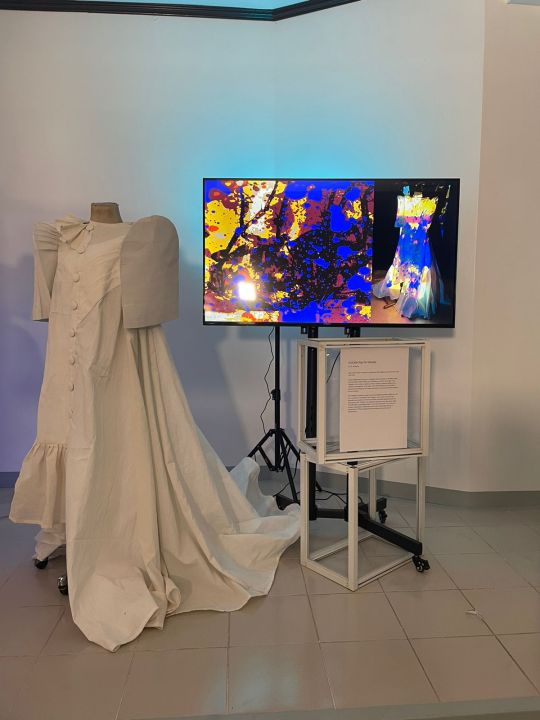
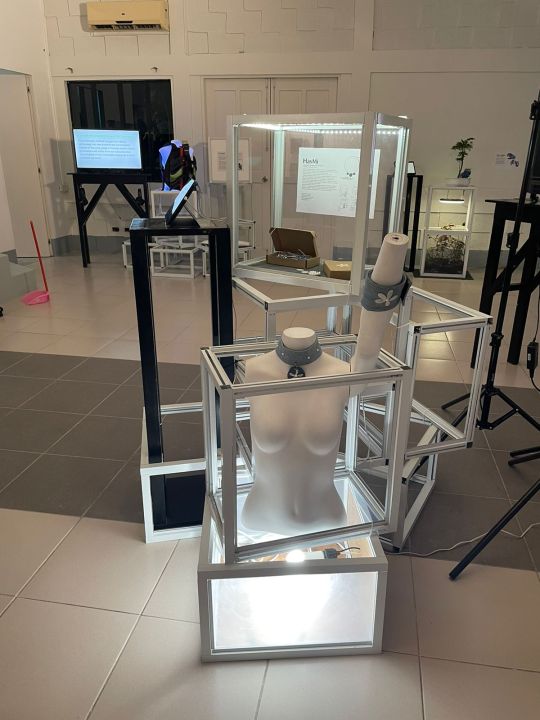

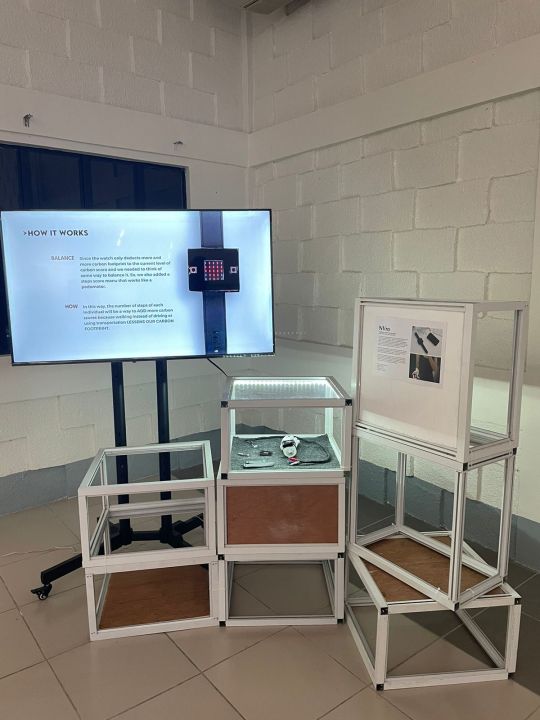
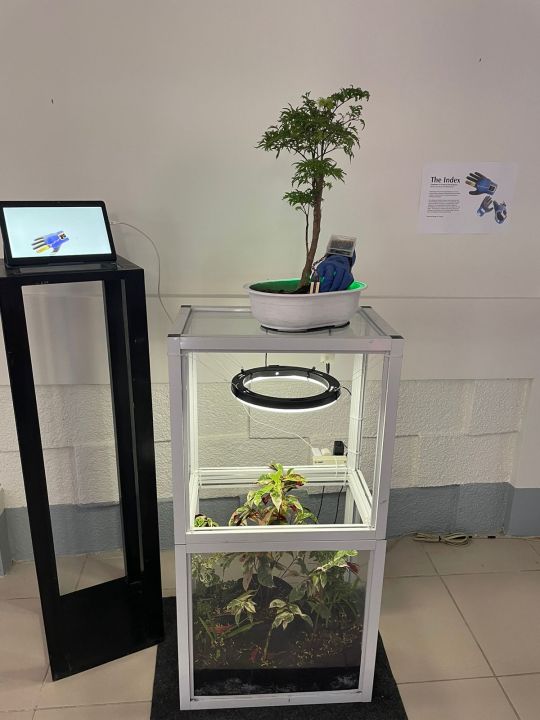
#futurists in residence#futurists#fashion#ternopil#futurists-in-residence-2022#hackathon2022#bams hackathon 2022#wearable futures
0 notes
Text
On starting a new project
This post was written by Renz Reyes, one of the residents of the 2022 Emerging Futurist-in-Residence program.

Starting a new project can be so overwhelming. you always want to start on the right foot. anxieties aside, i guess you just have to dive into the work head on. i really do enjoy the early stages in the design process. Coming up with concepts, researching reference images, and Making a mood board. i tend to always over indulge with the research. it just adds a layered nuance and thoughtfulness to everything. it makes all the difference. Ultimately, not all ideas will make it in the end. it really is quite a journey. The first idea might be totally different from the final output.
This is the first time i'm participating in an artist residency. i thought that these things were only reserved for visual artists. Fashion is indeed an artform but it is not officially recognized as such. What really drew me in to this project is the prospect of collaboration with people from an entirely different sector. specifically experts from field of Science/Technology. i've always designed a certain way. as any designer, who have developed their own style over the years and have recognizable aspects to their work. i don't want to speak for everyone but i do think We have personal biases to our work and how we design. we might favor certain themes/subjects. We have our go to Silhouettes, Prints and details people will recognize us for. and that is great. but it doesn’t leave much room for growth and experimentation. so in way, this residency was an avenue for me to discover new direction to my work, explore possibilities that i didn't know existed and also create a new way of storytelling through kinetic Garments and wearable tech.
Making a Terno is such a daunting task. The Filipinos feel a connection to it and have strong opinions about what makes a terno a terno. so besides innovating it and telling a new story through these new mediums. we remain respectful to what it stands for and want to make something that would be the best representation of it. I wanted to create something different.
i knew that i had to put all my ideas into writing first before i even attempt to start sketching and doing all the tactile stuff. One Thing i was sure of is i wanted my garment to mean something in the current zeitgeist but also calling back to history and past grievances. i had to realize what my Terno's place was in the modern world. look beyond my perview and the limitations i set myself. My goal was to create a Kinetic Garment that moved and transformed as you interact with it. but i asked myself these two questions: "What is the purpose of the movement, what motivates it? and how does that relate to the story i was trying to convey. This was a long read. i'll explain in great detail the first draft of my design in the next Blog.
0 notes
Text
Terno Futures
This post was written by Renz Reyes, one of the residents of the 2022 Emerging Futurist-in-Residence program. Speculating on the future of the Terno as an icon of Filipino culture and identity, he goes back and forth between the traditional and modern and synthesizing computers and mechanisms in work to come up with something unique.

(Image from Renz Reyes' public presentation.)
Welcome. We are in very strange times indeed. not really the most ideal Scenario. given to what is our Current reality. Hopelessness has set in and its so easy to get into a negative Headspace. after the Elections. I had a lot of mixed feelings. disappointment, anger and confusion. The desire to create was fleeting. but I knew moping around and sulking would be unproductive. and I can't be in that bubble for too long. to somehow get this thoughts out to comfort myself. I talked to a friend regarding our feelings at the time. and as our conversation progressed. We came to a consensus that we had to do something. A dialogue needed to begin.
As Creators ourselves. the best way we know is through art. Being Designers, We Naturally gravitated towards fashion and more specifically, The Terno. Since the Terno is a symbol of the Filipino people. which unfortunately has been tainted and synonymously linked to some unsavory individuals. now more than ever we need to claim the Terno as our own national identity.
As a creative who has a dayjob. I always sought ways to express my art outside commercial structures. Where I can explore my ideas to its fullest extent and just go off as the kid's would say Haha. So when this artist residency project by UPOU came into existence and I was offered to participate in it. it was a no brainer. What I really liked about this project is besides Creating meaningful, thought provoking pieces of Art. It also focuses on Futures literacy/ Thinking. I've always admired designers who are able to Combine Design and Technology in their work. Lately, There's been a shift in the industry where designers are collaborating with Scientists and Engineers. Developing new ways to create Textiles. Making Kinetic Garments, and having The Clothes be Computers themselves. its a different way of storytelling. These are the kinds of things I didn't know were even possible to do here locally. and these kinds of collaborations are the ones that yield the most interesting results. This being quite a new concept here. Made me more interested to make it happen.
Circling back to the Terno. We chose it since we want to do something that means to us and a lot of people. and if we were going to do something that elevates an artform from tradition to something Modern. it had to be the Terno. over the course of a few months I and my colleagues will be blogging The Progress of our work and the many changes that it will go into depending the challenges of Materials, production and the mentorship that we will all be under. i'm very interested in collaborating with The different experts in the fields of Technology/Science and Design and how it will affect my work visually and its purpose in the modern World.
2 notes
·
View notes
Text
Public talk by the 2022 Resident Emerging Futurists: The Terno Project
We're thrilled to announce that Resident Emerging Futurists will be presenting their works-in-progress in a public talk! The talk--which will happen via Zoom on 21 October 2022, 10 AM PHT (UTC + 8)--is part of the UPOU Research Conversations series.
youtube
The Emerging Futurist Residency is a research and creative program hosted at the Bukas Space by the University of the Philippines Open University and supported by Space Ecologies Art and Design. This hybrid virtual/in-person residency focuses on supporting and nurturing exploration of multidisciplinary teams of artists, scientists, designers, engineers, and activists in futures thinking and futures literacy. The residency aims to deconstruct dominant paradigms about the future and develops alternative models through a combination of critical inquiry and hands-on experimentation.
We welcome perspectives and proposals that foster long-term strategies and address themes of deep time and deep history; intergenerational thinking and planning; indigenous perspectives; connecting the past with the future; critical imageries of the future; critical digital literacies; speculative design; and radical pluridisciplinarity.
0 notes
Text
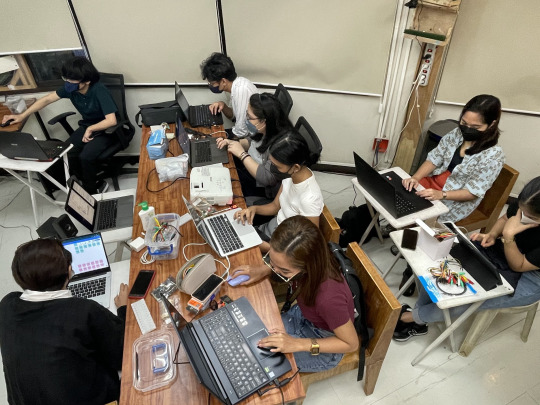
Wearable Futures course synchronous workshops
We're putting together the synchronous workshop series for the Wearable Futures course/hackathon, and it's getting to be really exciting! Confirmed workshops:
22 October 2022 (Saturday), 4:00 pm - 7:00 pm Wearable Tech + Speculative Design Workshop with Ann Peeters
29 October 2022 (Saturday), 4:00pm - 6:00 pm Metafuturism Lab Workshop with Mona Nasser and the Metafuturism Lab group, Part 1
8 November 2022 (Tuesday), 4:30pm - 6:00 pm Metafuturism Lab Workshop, Part 2:
0 notes
Text
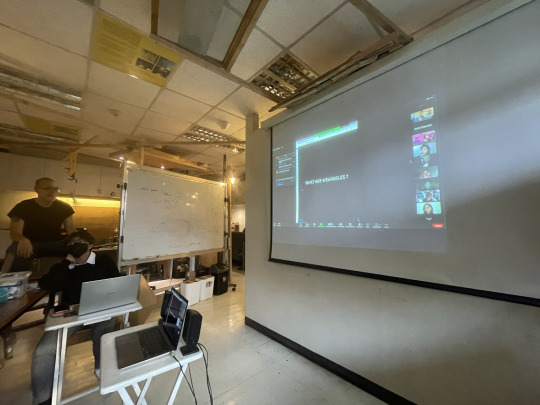
Shopping list for hackathon participants
We're putting together the list of things for the Wearable Futures Hackathon participants to have on hand before classes even start.
If you have been participating in the hackathon, click here to view the list of things that you should purchase. (A screenshot of the list is shown below.) If you want UPOU to buy your purchases back from you, you should keep the all the original packaging and the waybill attached to the packaging; this is very important if you want to be reimbursed.
If you're a confirmed participant or if you just want to play around with the tech we'll be using for the hackathon (whether you're actually going to be participating or not), order the items in the blue rows.
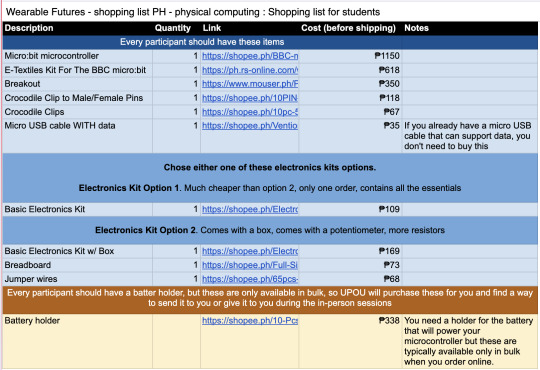
Once you get your kits, if you’re absolutely keen and want to get a head start, you’re welcome to start with the micro:bit using the tutorials on makecode.microbit.org. You’ll be asked to do the following tutorials during the course, but it’s perfectly fine if you want to start tinkering now with your micro:bit!
Flashing Heart
Name tag
Dice
Clap Lights
Blow Away
0 notes
Text

Training for pluridisciplinarity
I’ve been through a number pluridisciplinary schools and training programs, and have myself led several as well: the original ColLaboratoire summer school, ColLaboratoire 2020, and a number of Biomodd workshops, especially the months-long Biomodd [LBA2] and Biomodd [BRG13] workshops. What I’ve come to realize is that inter- and transdisciplinary thinking doesn’t come naturally to many people, and quite a lot of things have to be in place both on an individual and on a collective level.
Willingness to step into another disciplinary perspective, which involves the willingness to suspend, occasionally or temporarily, one’s own epistemological propensities.
Thinking like a child, and in particular the importance of openness (in the sense of “Big Five” openness to experience).
Abstraction and pattern-recognition, which means seeing the overall structures of relationships for any given system, and having a feel for how they might map to or echo other relational structures in other systems.
Sometimes there needs to be space and time allotted before that pattern-recognition happens. Rainer Maria Rilke writes about how “everything is gestation and then bringing forth”. So again there’s this thing about suspending judgment,, at least momentarily and selectively, as a kind of practice of “micropatience” in which we hold off on forming new ideas and beliefs in order to avoid premature convergence and suboptimal (i.e., local minima/maxima) solutions or interpretations within the space of all possible solutions and interpretations.
The willingness to form questions and to let them dangle, free from the anxiety of having to answer them right away before other questions are asked. To allow questions to mount and to remain calm in the face of the infinite number of possibilities they present. A willingness to “stay in the trouble”, as Marc Diamond used to say about the craft of acting. A particularly good question to get used to asking in pluridisciplinary work begins with, “What if..?”.
Improvising as a group work. Knowing when to stop saying “yes and”. Often I’ve found people stopping the yes-and process too early (i.e., terminating at a local plateau) because it is limited by their understand of what is technically possible.
Which brings me to technique and craft: having a deeply refined expertise in a few skills allows the horizon of possibilities to be more expansive.
I set these all of these thoughts down in an attempt to craft the learning experience for the Wearable Futures Hackathon. I fear that even with all the excellent narrative and interactive learning activities, unless these issues are addressed, the ideas and prototypes generated will be rather shallow conceptually or technically. I’m going to give this some thought and propose activities that can attempt to address them.
2 notes
·
View notes
Text
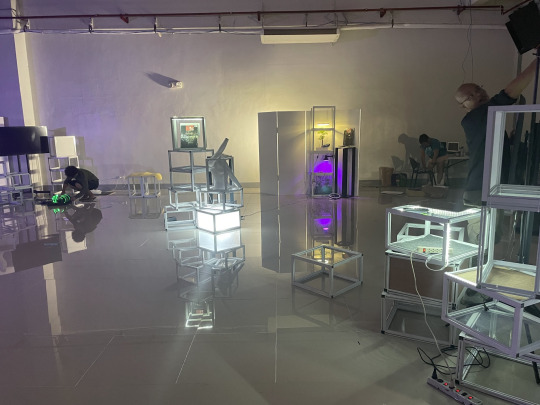
The Wearable Futures Hackathon is now open to more students!
We're happy to announce that we're opening the opportunity to participate in the 12-week Wearable Futures Hackathon to more UPOU students!
While we're still prioritizing BAMS students, we're welcoming applications from students other programs to participate. Here's who can participate:
BAMS students participating in the hackathon
as MMS 198
as MMS 200a or MMS 200b (you will have slightly different requirements)
not for credit pand urely out of interest
Other UPOU students who have been permitted by their Program Chair to participate in this course for credit (e.g., AA students taking this as as a substitutable course for HUM 40)
Also, are you curious about what the course will look like? Take a sneak peek into the Google Classroom we're building for the course! (Log in using your @up.edu.ph email address.)
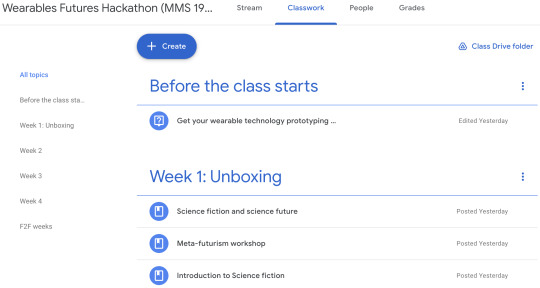
1 note
·
View note
Text
Announcing the BAMS Hackathon!

The Bukas team having been working hard over the past few weeks, brewing something exciting, and we're finally ready to uncork it! This coming 2022-1T trimester, BAMS will be offering a very special version of our MMS 198 (Special Topics) course for UPOU's Bachelor of Arts in Multimedia Studies program.
This course is special in the following ways:
Hybrid format. It is offered as a hybrid course (10 weeks virtual, 2 weeks face-to-face) and structured as an extended hackathon.
Highly creative themes. The theme is on futures thinking, speculative design, physical computing, and e-textiles.
Co-created by teacher and student. This version of MMS 198 was a collaborative project between FICS professor Diego Maranan, BAMS student Lucky Vengua, and FICS research assistant and visual artist Jerome Suplemento. After all, what better way is there to understand what might get students interested in a course other than to actually co-design a course with a student? We are also thrilled to be collaborating with Belgian wearable technologies expert Ann Peeters for this course!
Hands-on experience with creative technologies. Students will be guided through the process of imagining and describing futures scenarios, and then prototyping wearable technologies in the context of such scenarios
Partnership with the Emerging Futurist program. The course will be held in coordination with a new program we are also launching, the Emerging Futurist Residency Program. Students will receive mentorship and feedback from this year’s cohort of Emerging Futurists.
Open to more students. While MMS 198 is normally reserved for Junior BAMS students, MMS 198 can actually be enrolled with the consent of the instructor. We are therefore opening the course widely to all BAMS students.
Limited capacity. However, because of the nature of the course, only 25 or fewer students can sign up for the course. Priority will be given to those who are actually taking the course as MMS 198.
Learn more about the MMS 198/ BAMS Hackathon 2022.
2 notes
·
View notes
Text
We have a winning microcontroller!
The Bukas team is working with our wearable tech expert Ann Peeters on deciding which of microcontroller to use for the BAMS Hackathon 2022. Our choices:
micro:bit v2
Circuit Playground Express
Pico W
All of them have pros and cons, but we think we've settled on a winner... and it's the micro:bit! (The Circuit Playground Express came a very very close second.)

More online tutorials than the Playground Express. The onboarding tutorials are really well-developed! Which means:
It would take less work on our end putting together the guides.
The students would be able to get started with programming more quickly
Restricted types of LED (just red) might means that students will hopefully focus more on fundamentals of communication and signaling and less on making the pretty colors (oh so many pretty colors) that the Express offers.
While the none of them have WiFi capability, the micro:bit has bluetooth and radio communication, and makes it easier for different micro:bit controllers to communicate with each other... and that feels like it could have lots of potential.
The Playground Express looks really promising as well:
Seems easy enough to onboard people who are new not just to physical computing but may not have the best programming skills
Has lots of built-in sensors. (But maybe at this stage we don't need so many options.)
Way cooler LED display array than the micro:bit
The form factor feels like more suited to wearables
Feels like the best compromise between flexibility/power and ease-of-use/user-friendliness
But I think onboarding speed and experience is the most important thing, so the micro:bit it is.
The Pico is crazy cheap and I would love to play with it! But maybe not for the Hackathon, at least at this point in time? Also, availability in the Philippines seems like a problem.
2 notes
·
View notes
Text

Unboxing!
We have started "unboxing" the UPOU BAMS Hackathon 2022! Super exciting to see the weekly schedule fleshing out! Are you ready to be unboxed? Unboxing your mindset? Your vision or what the future can look like? Your creativity that has been stowed away since you were a child?
4 notes
·
View notes
Text
Inspiration!
This video sums up what we want to achieve here for the UPOU BAMS Hackathon 2022!
2 notes
·
View notes
Text
Reimagining the terno and getting ready for our 2022 Emerging Futurists-in-Residence
We're getting excited about announcing the first cohort of residents for our Emerging Futurist program! Over the past few weeks, we've been meeting up with our 2022 residents and exploring how we can work together. This is the first Bukas residency program, so collaborating with our residents to figure is going to be crucial to getting things right. In the meantime, they've been generating some interesting materials and ideas on where they want to take their residency.





0 notes